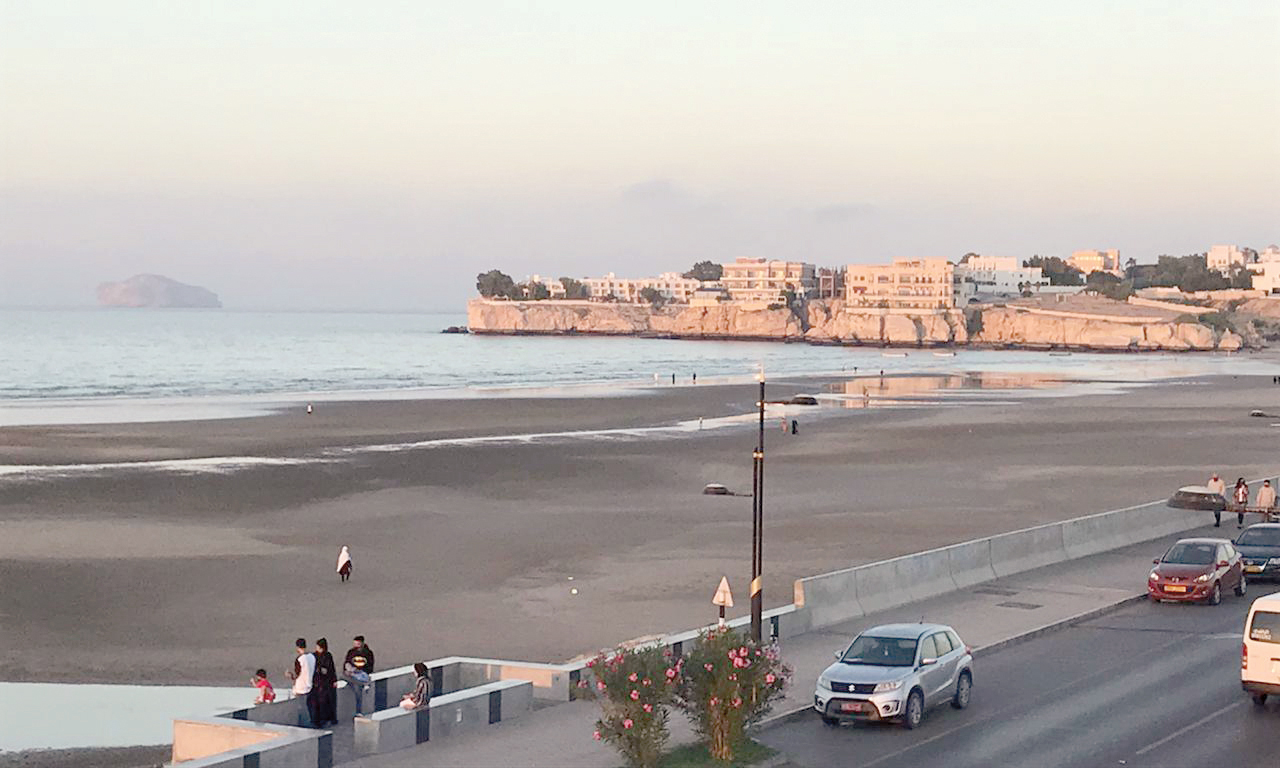

The Sultanate of Oman, home to many unique features and UN Heritage Sites, also boasts historic buildings and clusters of edifices that mark the journey of the country on its 50th anniversary of the blessed Renaissance.
Many residents of Muscat walking along the Qurum Beach Road, named after the mangroves (qurum), may be familiar with the buildings on the distant headland.

page ‘Muscat - The Good Old Days’ with many affectionate comments from former residents.
“It’s a milestone! The location is perfect, surrounded by the sea and the three-storey building blends seamlessly into the landscape, softened by mature trees and shrubs. Most of the apartments have recently been refurbished but retain much of the original character. Rather like the nearby Crowne Plaza, which was originally the Gulf Hotel, it should be protected as part of Oman’s early 70’s heritage, otherwise there is a gap,” says Dr Enrico d’Enrico, a former adviser to the Ministry of Heritage and Tourism, and resident in the compound for over 10 years.
The oldest is a compound of 42 flats constructed in the 1970’s by the J&P Construction Company.
One of the most exciting things about this area is that it has been continuously inhabited since the 4th millennium BC. At least 120 graves from this period were uncovered in the late 70’s by a French Italian archaeology mission headed by the late professor Maurizio Tosi. There is also perfectly preserved evidence of this early settlement and lifestyle, and with modern archaeological techniques much can be learnt about this early period. A small area of RH5 has been preserved and there are plans for a heritage visitor centre for this, one of the finest archaeological sites in the region, conveniently in the heart of Muscat.
“It’s well-engineered and solidly built and it survived Gonu, the 2007 cyclone, despite its exposed position. It was designed with community spirit in mind and was ahead of its time. It’s never won any architectural awards to my knowledge but it’s certainly a noteworthy building which should be preserved to reflect the changes in architectural style in Oman throughout the decades,” says former resident Nadia al Lawati, owner of the award winning architectural company 23 Degrees North. The environment is the other important aspect of this area. The mangroves are a major spawning ground for fish and since the start of COVID-19 days, turtles have come back to nest on the beach. The compound beach has many trees and is a major habitat for many birds and other wildlife.
There are a large number of native wild plants growing without help and a large outcrop of sea grass which, when dried, can be used for weaving very fine baskets, probably the last outcrop in the capital area. Even the new Oman Botanical Garden project does not have seagrass as it is difficult to establish away from the coast.
“Areas like this are part of the charm of Muscat and need to be preserved for future generations as part of Oman’s Heritage,” adds another resident of this area.
Oman Observer is now on the WhatsApp channel. Click here



